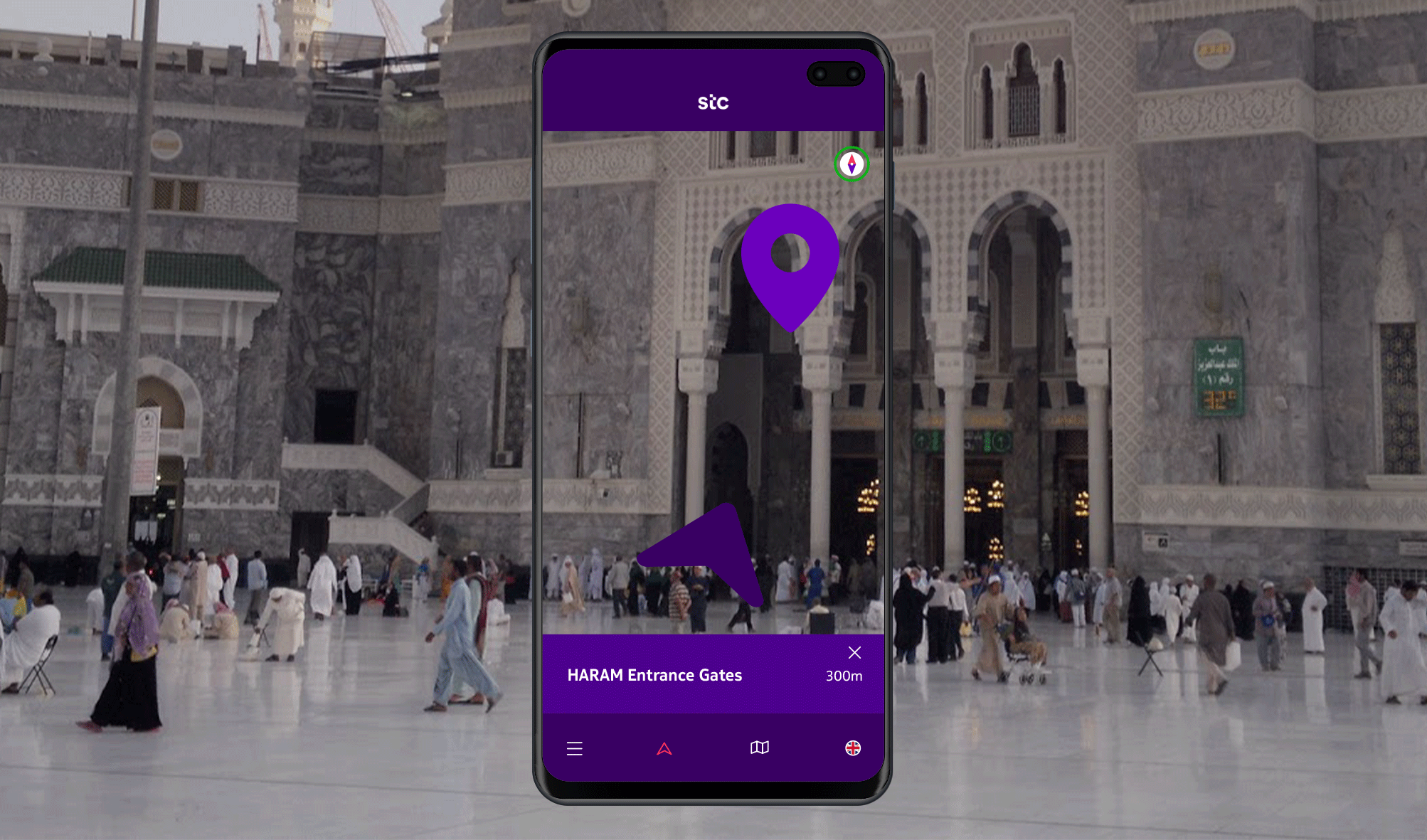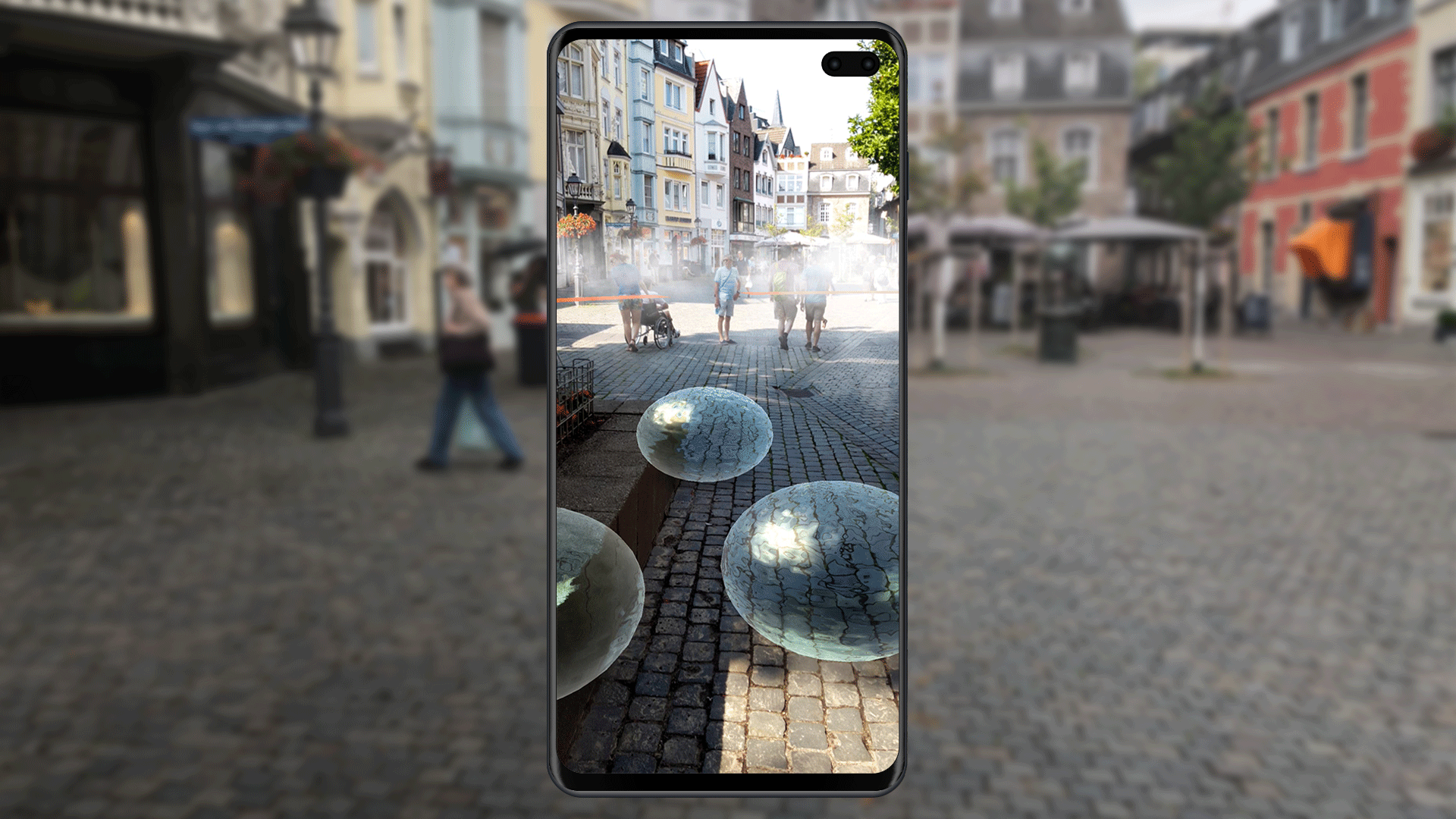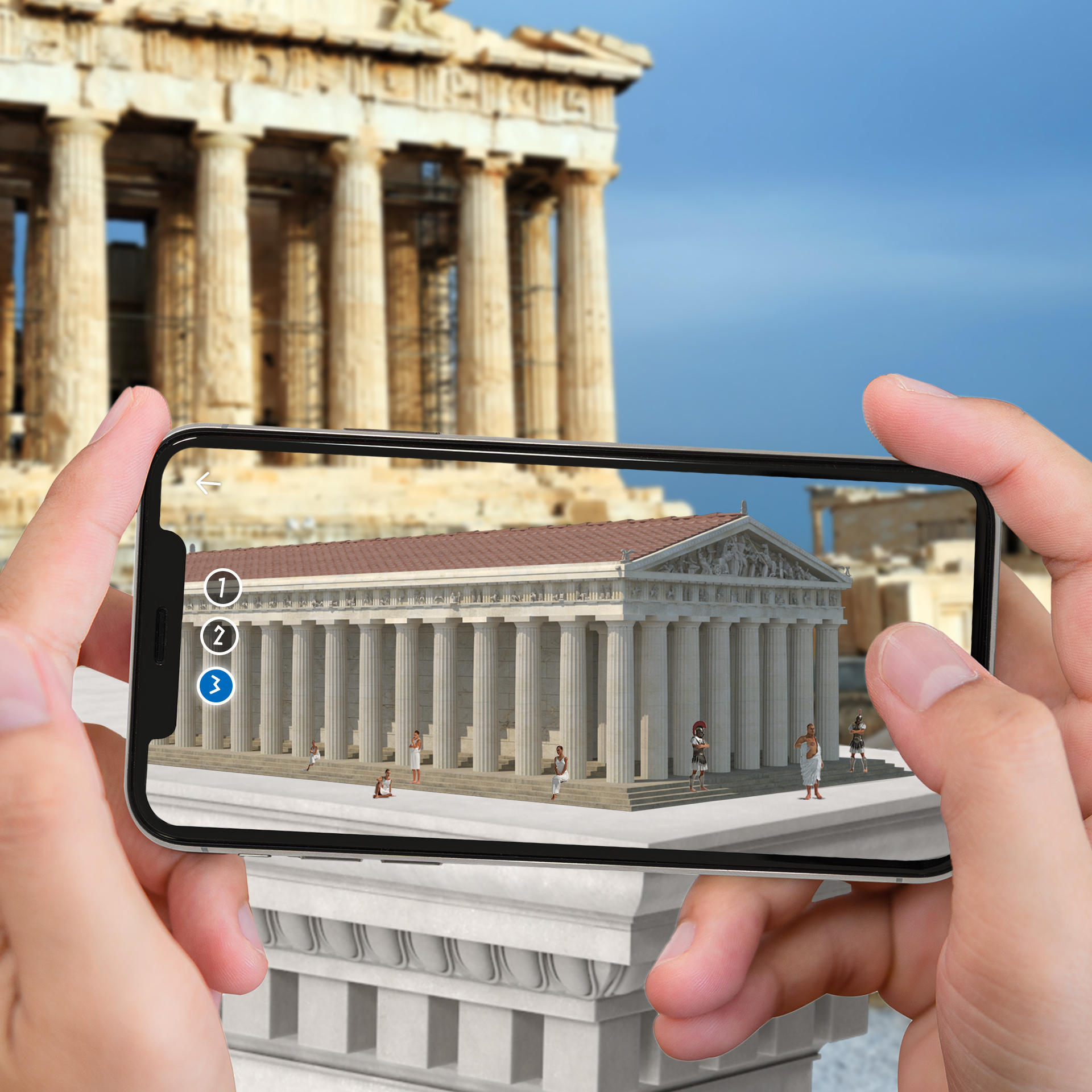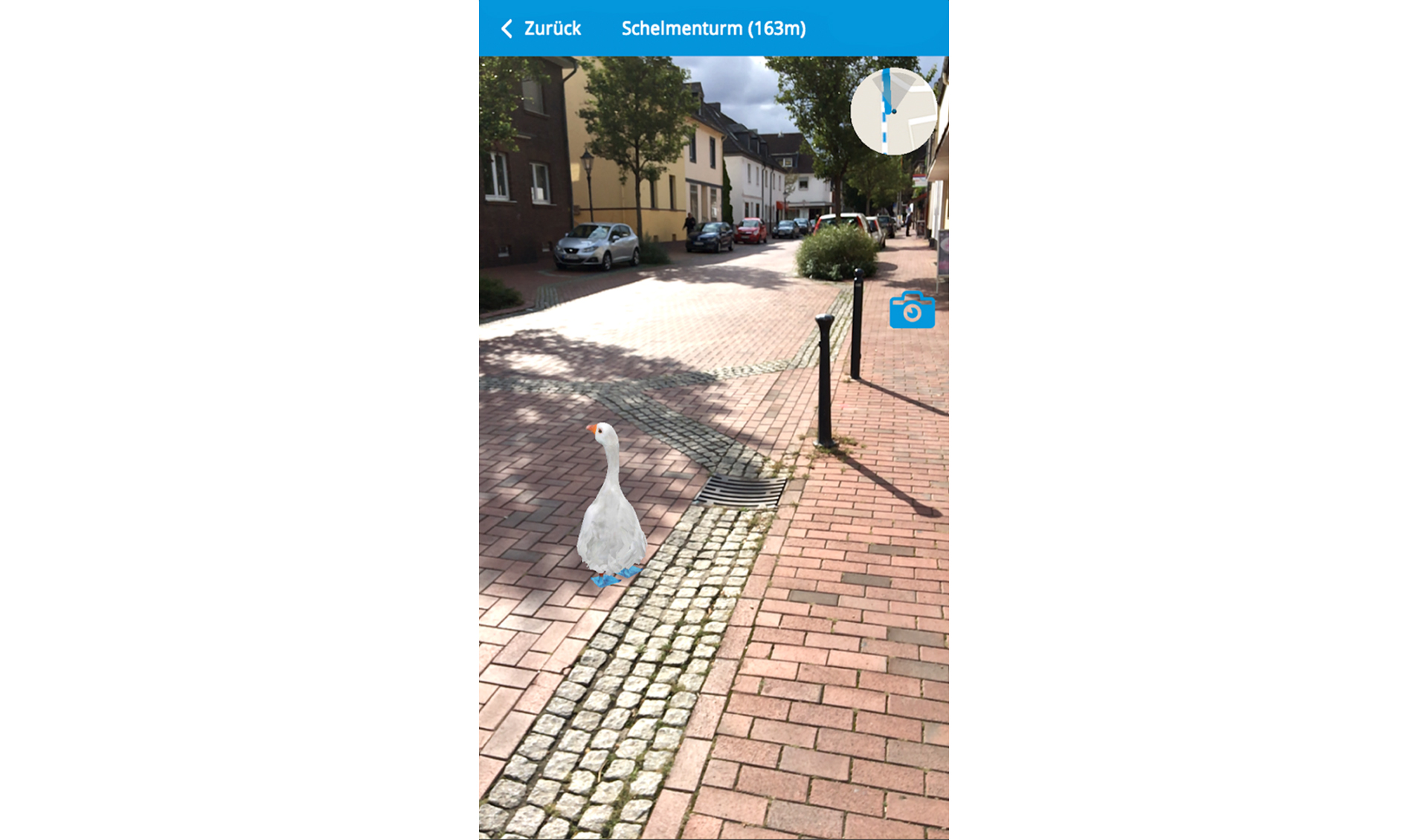Travelling with Augmented Reality
Augmented Reality in Tourism
When was the last time you went to a travel agency?
The younger the interviewed age group, the more often the answer is: never. We mean, what’s the use of it? All you need for a great vacation these days is a smartphone and a good Internet connection. Booking your accommodation, flight, train ride or bus takes no longer than a few clicks on the screen. The restaurant is reserved online, the public transport ticket is bought in the app. On the site, however, the whole thing looks a little different. Because without much planning and research, you only get to know a place superficially: What can a place do apart from the classic sightseeing highlights? Where and, most importantly, what do the locals eat? What does the city stand for, what is its historical background? And where the hell is the nearest subway? Questions over questions – and time-consuming research. But what if we were spared the time-intense planning? If we could just arrive and the smartphone takes care of all the travel planning for us, suggests the best sightseeing routes, tells us where we are, guides us to the best restaurants in town or directly to the next bus stop? Because that’s exactly what AR Guide does – our solution for innovative and efficient travelling.
Traveling with and in AR – a smart navigator

AR Guide is actually nothing more than the bundled power of Augmented Reality applied to the topic of travel. It doesn’t matter whether it’s London, Paris or the smallest town in the North Rhine-Westphalian outback – every travel trip can be turned into a highlight with AR. But let’s just start at the beginning of a vacation: We arrive at the airport or train station and ask ourselves: What is the best and fastest way to get to our hotel? Infrastructures and public transportation in unknown locations can be a challenge. Especially since not all places guarantee a perfect GPS positioning. Other than well-known navigation apps like Google Maps or MapsMe, AR Guide works entirely without GPS. Using the smartphone’s camera view, the app identifies the environment and can determine exactly where the user is located, based on given landmarks used for object recognition.
60% of travellers are already interested in AR orientation at their travel destination
Virtual arrows guide tourists through the streets, to the nearest subway and thus, safely to their destination. Of course, if the app does not know the booked accommodation, it cannot guide anyone there. Most of the time, however, it is enough to find the street you are looking for. Anyone who thinks that this is not convincing should take a look at the facts: according to a study by Bitkom from 2019, around 60% were already interested in Augmented Reality Navigation at their destination. The trend, as always, is growing.

Who needs tourist guides when you can have avatars?
Instead of the virtual direction arrows, an avatar could also guide the visitors through the city, which in turn leads us to the next aspect of a good trip: Getting to know the place. avatars can provide variety in many ways. Not only do they guide visitors through the city, but they can also walk fixed routes together with the tourists, offering exciting facts about monuments and sights thanks to Audio Overlay. A guide that can be used independently of time and with whom you don’t have to arrange a meeting point. Destinations can thus be experienced and discovered 24/7 and even night owls get their money’s worth. The best part? Virtual tourist guides embody the quintessence of individuality and can take on any shape and color. How about a historical personality who has impacted the place? A famous son or daughter of the city? Or perhaps the heraldic animal that has come to life, as here in Monheim, where the town is now being discovered in a goose march?
But that’s not all: Multimedia content can be added as desired to the individual corner points of the route. Photos, videos, animations – all this can easily become part of the experience. In Aachen, for example, the relevance of the thermal water springs was made visible again, because only a few people knew the true significance of the springs for the history of the city. This made it even more important for the Aachen 72° City Museum to revive them – and to do so as innovative as possible. Using various animations, the reality of the visitors is now enhanced with aqua animations and all relevant hard facts.

History is alive!
And speaking of the history of a place: Why read about it when you can experience it live? Because even buildings that have long since crumbled could be brought back to life with AR. Thanks to realistic 3D visualizations, ruins can be experienced again in their full glory and become much more than just a few leftover stone constructions. A virtual restorer so to say, which can also be usefully employed for museums and monuments and allows entire sceneries to be relived on the screen. The Roman Forum, for example, could not only be restored to its former glory, but the hustle and bustle of the marketplace could also be visualized. Or how about ancient Greece and a glimpse into the golden age of the Acropolis? You see, the possibilities are endless.

AR Guide inside and outside
Speaking of museums: Here, too, Augmented Reality can provide support in a variety of ways, because the possibilities of an AR guide don’t end at the doorstep: Navigation and avatar work flawlessly here, too, and make it possible to turn a visit to a museum into an interactive experience that will definitely be remembered: Gone are the days of marching through a museum with huge groups, if you could even get a ticket for a guided tour. With the AR Guide, you always have a private tour booked with a guide who is there exclusively for you. And while we’re at it, why not bring some statues to life? The Statue of Liberty can explain to us how she got where she is instead of just standing there!

Oh, you Marketing miracle
If you heard any strange noises during this article, they were probably the screams of joy of any marketing team desperately trying to get more visitors to their cities and cultural sites. You’re welcome, dear marketing teams around the world 😉 AR Guide is the solution you are looking for. Because with Augmented Reality, every city trip becomes a digital adventure. The possibilities are endless just like this article could be endless. AR Guide is a navigator and tourist guide, a helping hand and exciting smartphone fun. In short: AR Guide is everyone’s best friend: No matter if visitors or locals wanting to experience their city in a new way. Discover the countless possibilities of AR Guide here.
